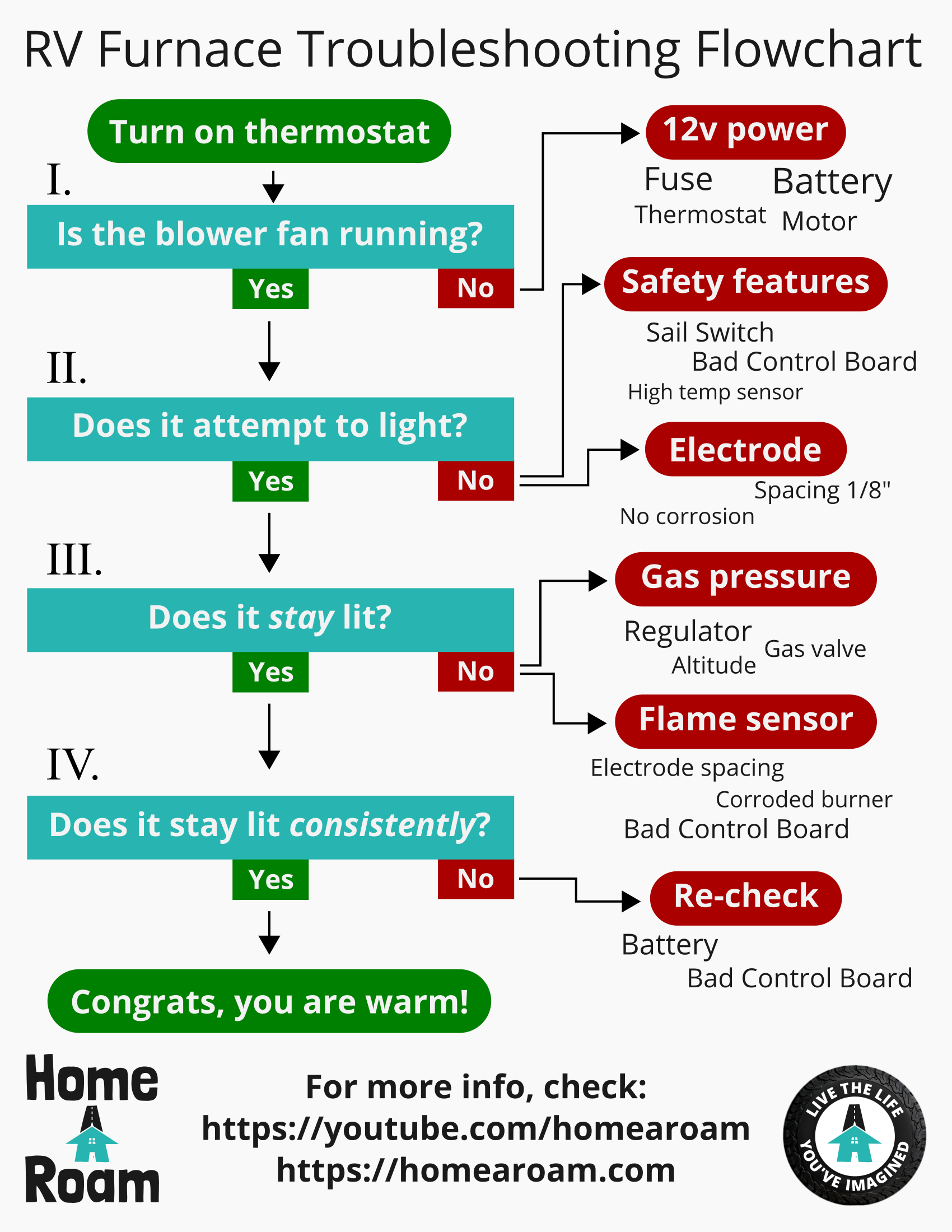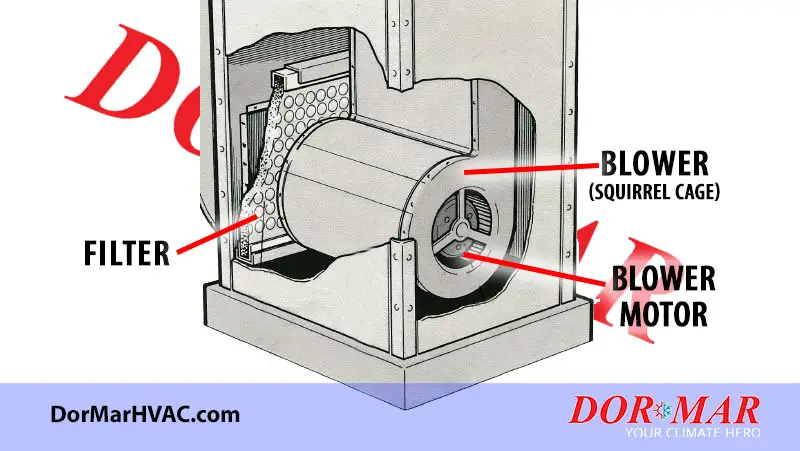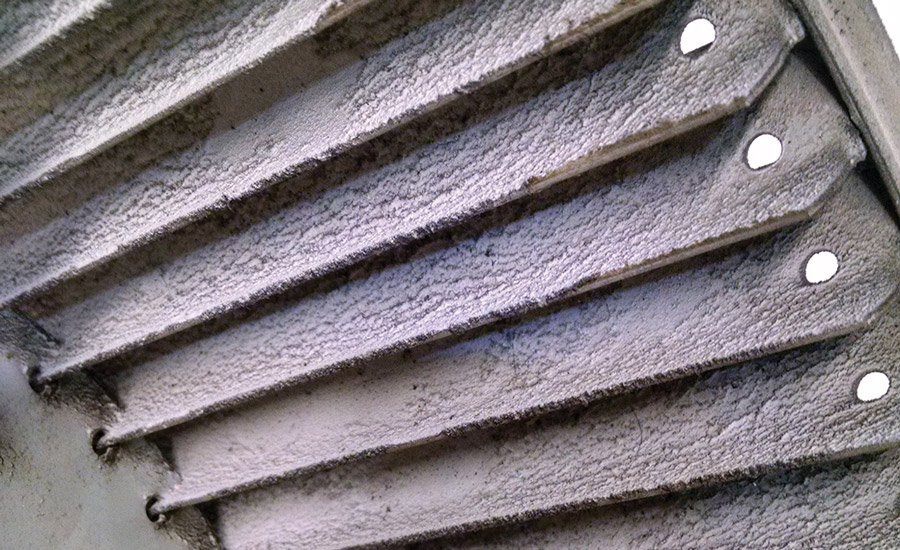To know if a furnace blower motor is bad, check for weak airflow or no airflow, which may indicate a malfunction due to clogs, leaks, or a faulty capacitor. Weak airflow, unusual noises, and increased energy bills are signs that the blower motor may need replacement.
If the blower fails to turn on, it could signify the need for a new motor to restore proper heating function. Regular maintenance and prompt attention to any signs of blower motor issues can help avoid unexpected breakdowns and ensure efficient operation of your furnace system.

Credit: homearoam.com

Signs Of A Bad Furnace Blower Motor
If you notice weak airflow or unusual noises such as rattling or screeching from your furnace, it might be a sign of a bad blower motor. Additionally, if there is no warm air coming through the heat registers or if you experience high energy bills, it could indicate a malfunctioning blower motor.
Weak Or Absent Airflow:
Weak airflow or total lack of it is a clear indicator of a bad blower motor. Causes could include clogged blowers, leaky air ducts, or a faulty capacitor.
Unusual Noises:
Rattling or screeching noises coming from the furnace may signal a failing blower motor. These sounds indicate potential internal mechanical issues that need attention.
Troubleshooting Tips
Detecting a faulty furnace blower motor is crucial to ensure optimal heating. Signs include weakened airflow, odd noises, and high energy bills. Regular maintenance can prevent blower motor issues and ensure efficient heating systems.
Testing For Voltage
To check for voltage, turn off power and utilize a multimeter to test power supply connections.
Checking The Capacitor
Determine if the capacitor is causing issues by discharging any remaining voltage and measuring its capacitance.
Testing The Resistance Of The Blower Motor
Assess blower motor resistance by testing each speed tap individually and checking resistance at various speeds.
If you experience weak airflow or strange noises, it may be an indication of a faulty blower motor.
Diagnosing Blower Motor Issues
When it comes to your furnace, the blower motor plays a crucial role in circulating heated air throughout your home. Diagnosing blower motor issues is essential to ensure your heating system operates efficiently. Knowing the signs of a bad blower motor can help you address the problem early on, preventing further damage and costly repairs. Below, we look at some common symptoms to help you determine if your furnace blower motor is indeed malfunctioning.
No Airflow
If you notice no warm air coming from the vents, it may indicate a broken blower motor. This lack of airflow may also stem from clogged blowers, leaky air ducts, or a faulty capacitor, leading to reduced heating efficiency in your home.
Inconsistent Performance
Less airflow, rattling or screeching noises, and unusual smells can signal inconsistent blower motor performance. These symptoms could indicate underlying issues such as motor wear, damaged bearings, or a malfunctioning fan assembly.
Motor Overheating
If your motor overheats, it can lead to its premature failure, resulting in the need for a replacement. Overheating can be caused by electrical problems, dirt buildup, or issues with the motor’s bearings.

Credit: www.achrnews.com
Determining The Need For Replacement
To determine if your furnace blower motor is bad, check for weak airflow or strange noises like rattling or screeching. High energy bills and lack of warm air are also signs of a faulty motor, indicating a potential need for replacement.
Regular maintenance can help prevent issues and prolong motor life.
Rattling Or Screeching Noises
If your furnace blower motor is making rattling or screeching noises, it is a clear indication of a potential problem. These noises can be caused by worn-out bearings, loose parts, or a misalignment in the blower motor assembly. Ignoring these noises can lead to further damage to the motor and other components of your furnace system.
High Energy Bills
Another sign that your furnace blower motor may be bad is a sudden increase in your energy bills. A malfunctioning motor may require more energy to operate efficiently, resulting in higher energy consumption. If you notice a significant spike in your monthly energy bills without any other apparent reasons, it’s worth investigating the condition of your blower motor.
Replacing a faulty blower motor can help restore the energy efficiency of your furnace system, ultimately reducing your energy bills.
Preventive Maintenance And Early Detection
Detect early warning signs of a faulty furnace blower motor through preventive maintenance. Look for weak airflow, strange noises, or high energy bills as indicators of malfunction. Regular inspections can detect issues before they escalate, ensuring your furnace operates efficiently.
Regular inspection and preventive maintenance of your furnace blower motor are crucial for its efficient functioning. By detecting any signs of a bad blower motor early on, you can avoid costly repairs or replacements down the line. In this section, we will discuss two important aspects of preventive maintenance: age and wear, and regular inspection.Age And Wear
Over time, the blower motor of your furnace will naturally wear out due to regular usage. The average lifespan of a furnace blower motor is around 15 to 20 years. However, the actual lifespan can vary depending on factors such as usage frequency, maintenance, and environmental conditions. If your furnace blower motor is approaching or exceeding this age range, it is important to be proactive in inspecting its performance.Regular Inspection
Regular inspection of your furnace blower motor can help you identify any signs of a potential problem before it worsens. Here are some key aspects to inspect:- Blower operation: Turn on your furnace and observe if the blower motor is operating smoothly. Any unusual noises, vibrations, or difficulty in starting the motor may indicate a problem.
- Airflow: Check the airflow from your vents. Weak airflow or no airflow at all could be a sign of a faulty blower motor.
- Visual inspection: Carefully examine the blower motor for any visible signs of damage, such as frayed wires, rust, or overheating.
- Motor bearings: Lubricating the motor bearings can help prevent premature wear and extend the lifespan of the blower motor.
- Electrical connections: Ensure that all electrical connections to the blower motor are secure and free from any corrosion or damage.

Credit: foxfamilyhvac.com
Frequently Asked Questions On How To Know If Furnace Blower Motor Is Bad
How Do I Know If I Need A New Furnace Blower?
If you are experiencing weak airflow or no airflow at all, it may indicate a faulty furnace blower motor. Other signs could be rattling or screeching noises, high energy bills, or strange smells. It is also possible that the blower motor needs replacement if it is not turning on at all.
How Do I Know If I Need To Replace My Blower Motor?
If you notice weak or no airflow, rattling or screeching noises, high energy bills, or strange smells, it may be time to replace your blower motor. These signs can indicate a broken or inefficient motor. It’s also important to check for clogged blowers, leaky air ducts, or a faulty capacitor as possible causes.
What Happens When Furnace Blower Motor Goes Out?
When furnace blower motor goes out, there is no heated air through vents. It indicates the need for a replacement motor.
What Is The Life Expectancy Of A Furnace Blower Motor?
A furnace blower motor typically lasts around 15-20 years before needing replacement due to wear and tear.
How Do I Know If I Need A New Furnace Blower?
No airflow or weak airflow, rattling or screeching noises, high energy bills, and strange smells are signs of a bad blower motor.
Conclusion
In the wake of understanding the signs of a failing furnace blower motor, it’s essential to promptly address any issues. By recognizing weak airflow, unusual noises, or motor overheating, you can potentially prevent costly repairs or a complete motor replacement.
It’s important to stay proactive and address these signs early on to ensure the efficient functioning of your furnace.